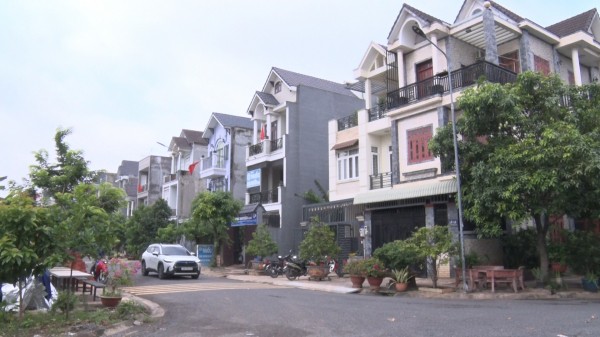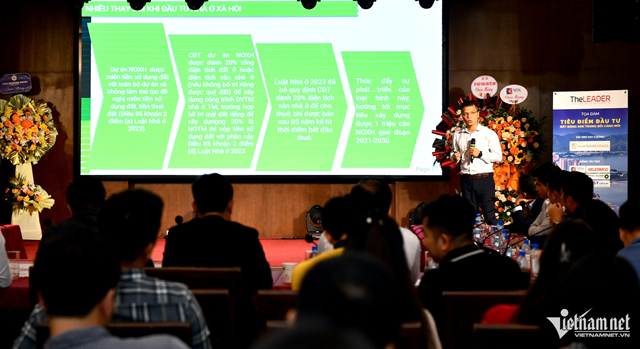
Arch. Tran Ngoc Chinh, former Deputy Minister of Construction and Chairman of Vietnam Urban Planning and Development Association |
Prime Minister Pham Minh Chinh’s Official Dispatch No. 78/CD-TTg dated May 29, 2025, on focusing on streamlining and simplifying administrative procedures in the construction sector has materialized many directions given by the head of the Government during the law-building session in May 2025.
Notably, the policy on reducing the number of permits required for construction projects that already have detailed planning at a scale of 1/500 or are located in areas with approved urban designs was once again mentioned.
This demonstrates the Government’s strong determination to minimize procedures closely related to people’s lives but often cause bottlenecks and give rise to red tape and corruption.
The public sees in this policy a consistent approach to reducing red tape, shifting from pre-inspection to post-inspection, and empowering people to proactively carry out activities stipulated by detailed and legal regulations.
Timely and accurate directions
Arch. Tran Ngoc Chinh, former Deputy Minister of Construction and Chairman of Vietnam Urban Planning and Development Association, assessed that the Prime Minister’s direction on reducing the number of construction permits for projects with detailed planning at a scale of 1/500 or with approved urban designs is very timely and accurate.
First, the country is in the process of reorganizing its apparatus, administrative units, and local authorities at two levels, which requires the development and improvement of institutions and laws compatible with the new models of ministries, sectors, and localities. Therefore, for matters related to people and businesses, we should streamline and simplify as much as possible. Not only in the construction sector but also in all other sectors, we need to apply this way of thinking.
Second, the Law on Urban and Rural Planning 2024 (which will take effect on July 1, 2025) has clearly stipulated the formulation and appraisal of detailed planning at a scale of 1/500 with specific indicators such as construction density, height, and setback for construction works in each area. After the Law takes effect, there will be guiding documents to provide a complete and detailed legal framework for people and businesses to follow. Thus, for construction works in this group, applying for construction permits will no longer be necessary.
“In my opinion, in addition to regulations on height, there should also be regulations on the uniformity of the first floor of street-facing houses to facilitate urban design and decoration and create space for business activities,” Arch. Tran Ngoc Chinh added. “The guiding documents should also pay attention to regulations on underground floors for construction works, especially in urban areas, to avoid cases where people build unauthorized underground floors or exceed the permitted number of floors, affecting the safety of the works themselves and surrounding infrastructure.”

Dr. Nguyen Van Dinh, President of Vietnam Real Estate Brokers Association |
Dr. Nguyen Van Dinh, President of Vietnam Real Estate Brokers Association, was impressed by the professional, effective, and modern management spirit reflected in the Prime Minister’s direction. In many advanced countries, to build a house, one only needs to hire an architect with a practicing certificate and have them design and stamp the drawings. This ensures that the house is built according to architectural, safety, and technical standards, and the architect will be legally responsible for the designed project.
“This type of management is very modern, civilized, and transparent. Civil servants working in the government apparatus are responsible for setting architectural and technical standards, managing intermediary units supporting the people, and supervising the implementation. People only need to follow the regulations and will not encounter any difficulties or obstacles,” said Dr. Nguyen Van Dinh.
Guiding people to do the right thing
The synchronization of orientations in the Prime Minister’s directions and legal documents, guiding documents, etc., will create a clear legal framework. The remaining factor is the readiness of people and businesses to comply with the law, reducing the burden of post-inspection and minimizing risks in construction safety, which directly affects their lives and property.
According to Arch. Tran Ngoc Chinh, we should encourage the private sector to participate in areas that used to be handled by state employees. In each city and locality, there are architectural companies licensed to operate in the field of designing and constructing building works. These enterprises have personnel capable of designing aesthetically and following the standards stipulated in the planning with solid foundations and structures, ensuring proper water and electricity connections, and meeting fire protection requirements and other safety factors. For construction works that do not require permits, people should be encouraged to use the services of these enterprises to ensure compliance with planning regulations and safety requirements.
“We must understand that even without a permit, the owner of the construction work still needs to submit construction documents, including design drawings, to the competent authorities for supervision and post-inspection. The stamp and signature of the enterprise on the design drawings will ensure the professionalism of the construction work, reducing the time for supervision and post-inspection by state employees. Moreover, in case of non-compliance with planning standards or unexpected incidents, the owner of the work will have a basis to take legal action against the design consulting unit for compensation. These enterprises will also be legally responsible for their work,” said the Chairman of Vietnam Urban Planning and Development Association.
Arch. Tran Ngoc Chinh noted that not all areas have detailed planning at a scale of 1/500, so it is still necessary to apply for construction permits. Going forward, localities need to actively develop and complete detailed planning, covering areas with construction conditions to provide a legal basis for people and businesses to carry out construction works without permits.
“For areas without detailed planning, only with planning subdivision, the authorities need to provide guidance and suggestions on the future planning orientation so that investors can either temporarily suspend construction, waiting for detailed planning to avoid the need for permits, or proactively design and adjust the construction works to suit the future planning,” the expert added.
Sharing the same view, Mr. Nguyen Van Dinh, President of Vietnam Real Estate Brokers Association, said that to reduce the number of construction permits and other types of administrative procedures in this field, it is necessary to have synchronized management, governance, and supervision capabilities of the competent authorities.
First, officials and civil servants in charge must have sufficient qualifications and expertise to supervise, inspect, and detect shortcomings in the early stages, creating favorable conditions for people and businesses to rectify them promptly.
Second, even with a complete and detailed legal framework, we must establish a truly high-quality and easily accessible and understandable management and governance process so that investors can easily understand and comply with the regulations.
“Any transition in management will require a certain amount of time to adapt. However, I believe that the management and governance are moving towards establishing and operating the best standards that are easy to implement and supervise. In addition, the companionship and support from the authorities will create trust and confidence for people and businesses,” affirmed Mr. Nguyen Van Dinh.
Hoang Hanh
– 09:59 06/03/2025
















